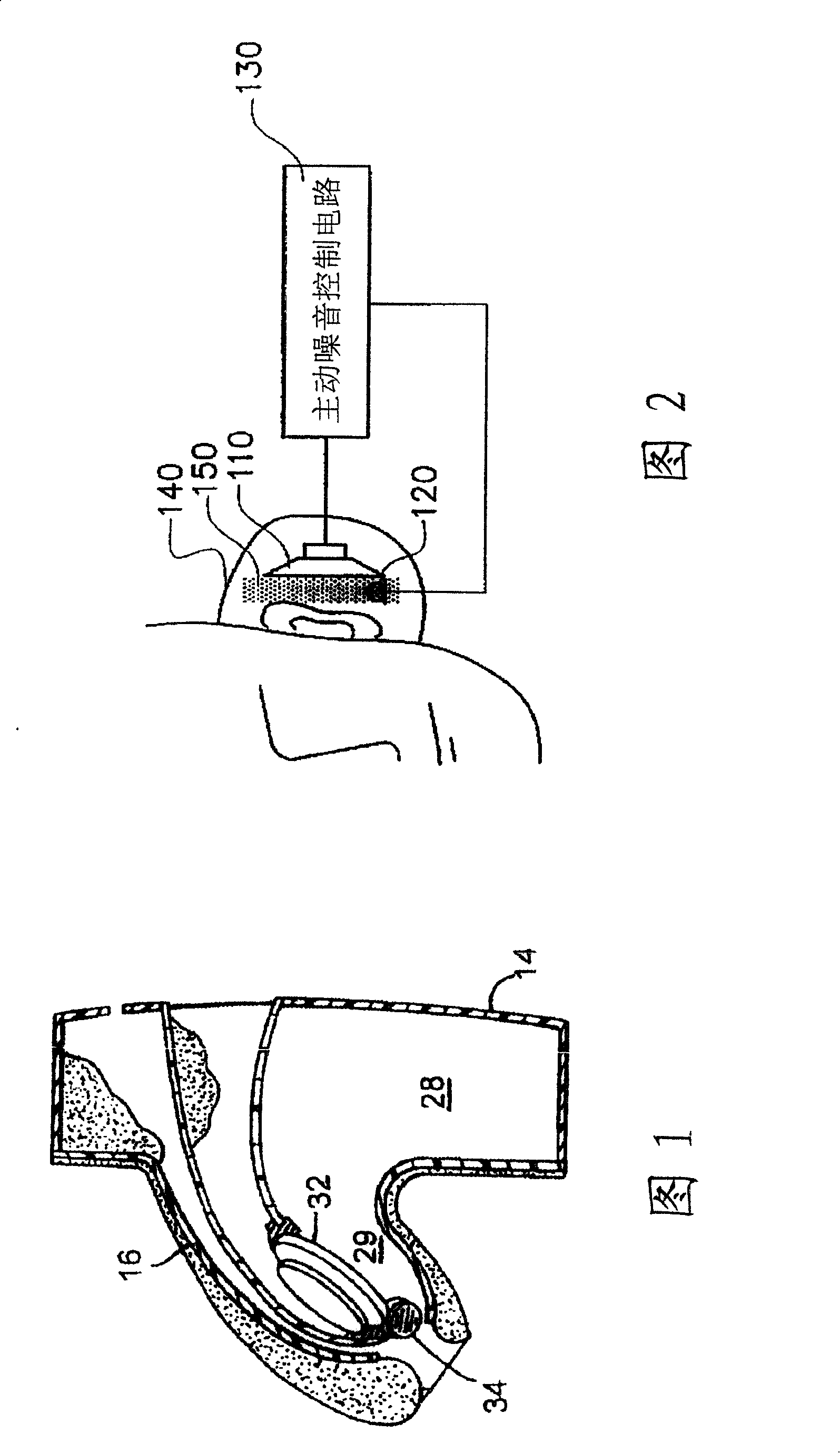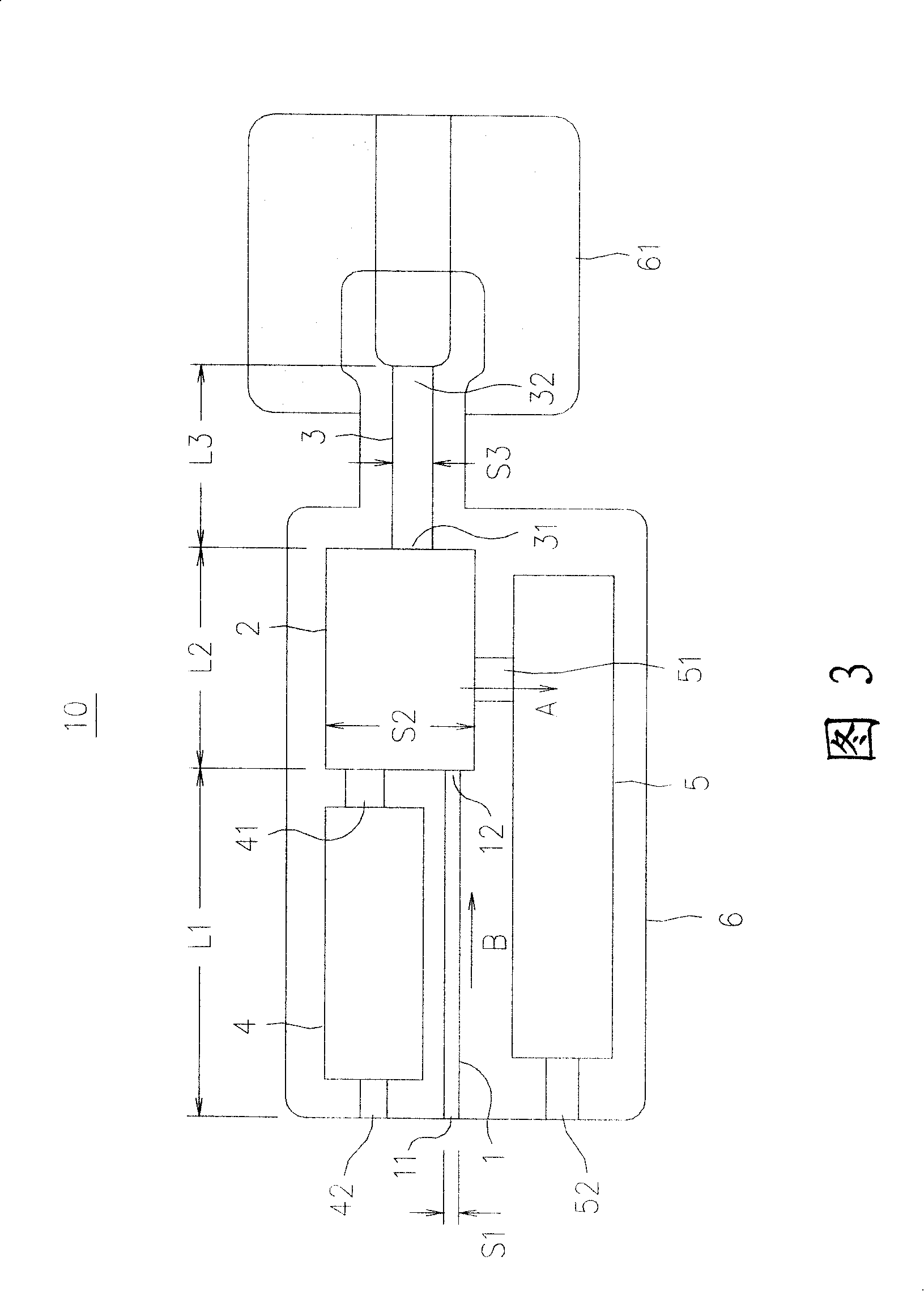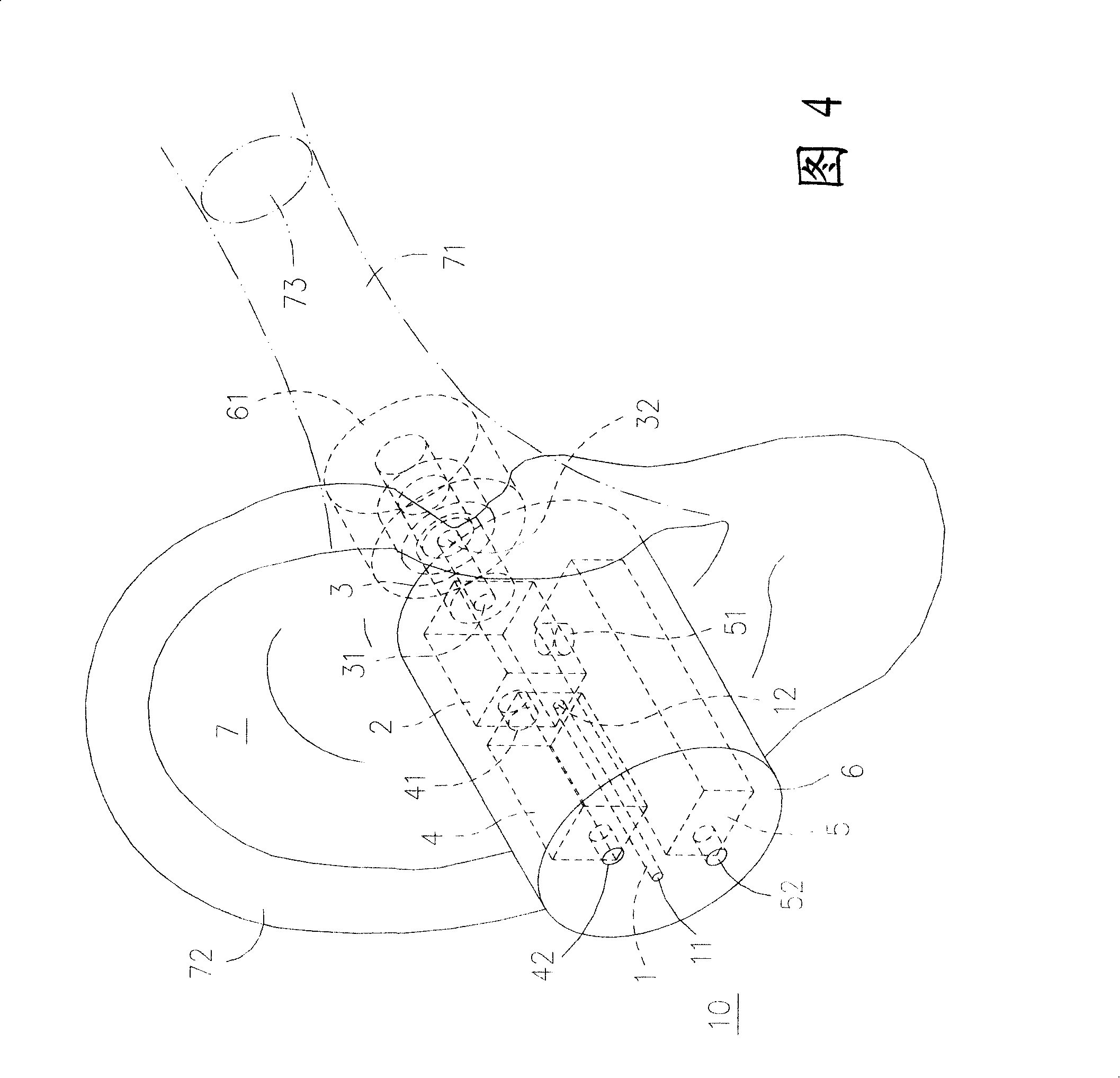[0002] Long-term
exposure to noise can easily lead to
hearing loss in the ears, and excessive noise can make people feel uncomfortable
In recent years, due to the popularity of portable audio-visual equipment, the number of people who use
headphones to listen to music has increased. When users are exposed to noisy environments, they often turn up the volume of the headphones because they cannot hear the sound of the outside world. damage to the
eardrum[0003] Taking earphone products as an example, the earphones with noise suppression effect in general earphones can be roughly divided into
earmuffs and earplugs. Traditional
earmuffs usually have a bulky earmuff, and most of the
earmuffs are made of Foam is used as a sound insulation material, and the user sets the earmuffs outside the ears, and the ears can be wrapped in the earmuffs, so as to prevent
external noise from entering, but it is not conducive to carrying because of its bulky size; as for earphones, It can put the earphone into the ear, and through the tight fit formed between the earphone and the ear, the earphone can be fixed in the ear, and the
external noise can be blocked. Although the earplug-like earphone has the
advantage of being easy to carry, However, compared with the earmuff type earphones, although the sound insulation effect of the earplug type earphones is better, but because they are completely sealed, the air pressure will be unbalanced, and the so-called internal body noise will be heard, that is, when the user uses it, he will hear it. All kinds of internal sounds caused by talking,
swallowing, or even the movement of body muscles and joints, and there is a feeling of suffocation and discomfort
[0004] Due to the poor sound insulation effect of the existing earmuff structure, there is a design combined with an active
circuit design to filter out noise, such as the US Patent No. 4455675 "Head phoning". The said case first proposes a sound
control system, which It is to generate sound
waves through a sound sensing device to eliminate unwanted sound
waves by interference. The above-mentioned type of technology is currently widely used by related industries, but the preferred applicable frequency range of the above-mentioned type of noise suppression method is a frequency range of several kHz The following low-
frequency noise, and high-frequency noise, because the phase cannot be synchronized, resulting in poor anti-noise effect, it still needs to be eliminated by earmuffs; as for the patents of various countries that have been proposed in the later period to suppress noise, such as the US invention patent 4985925 No. "Active
noise reduction system", the electronic components or their circuit
layout may be different, but none of them can escape the design method of actively suppressing noise by the circuit, so high-frequency noise cannot be eliminated
[0005] Please refer to the U.S. Patent No. 6,683,965 "In-the-ear
noise reduction headphones" shown in Fig. 1. The case proposes an earphone inserted into the
ear canal, and the earphone has an outer casing 14, and the outer casing The body 14 includes an extension part 16 that can be put into the
ear canal (not shown in the figure), and the outer shell 14 has an inner cavity 28, and the inner cavity 28 is connected to the passage 29 in the extension part 16. In the same way, its speaker 32 is configured in the channel 29, and the
microphone 34 is configured in the space below the speaker 32 and the channel 29, through the configuration of the speaker 32 and the
microphone 34, and the channel 29 and the ear canal to generate
sound field coupling or transfer to achieve the purpose of reducing noise, but the cavity 28 and channel 29 have no filtering effect and cannot filter out high-frequency noise
[0006] Please refer to the Taiwan New
Patent Application No. 91213715 "Feedback
Active Noise Control Earphone" shown in Fig. On the contrary, the
sound wave signal is then sensed by the
microphone sensor 120 to detect the ambient noise of the speaker 110 and converted into a noise sensing signal, because the microphone sensor 120 is arranged in front of the speaker 110 and is located at the The front of the speaker 110 is in the energy vortex 150 generated in the earmuffs 140 due to the near-
field effect, so it can suppress the reception of low-frequency noise, and can cancel each other with the anti-phase sound waves generated by the speaker 110; For low-frequency noise cancellation, the location of the microphone sensor 120 is limited to the front of the speaker 110, and the earmuffs 140 and the
active noise control circuit 130 must be matched at the same time.
 Login to View More
Login to View More  Login to View More
Login to View More 


